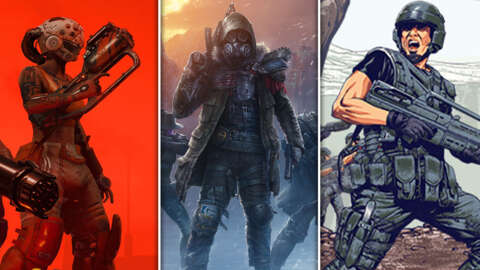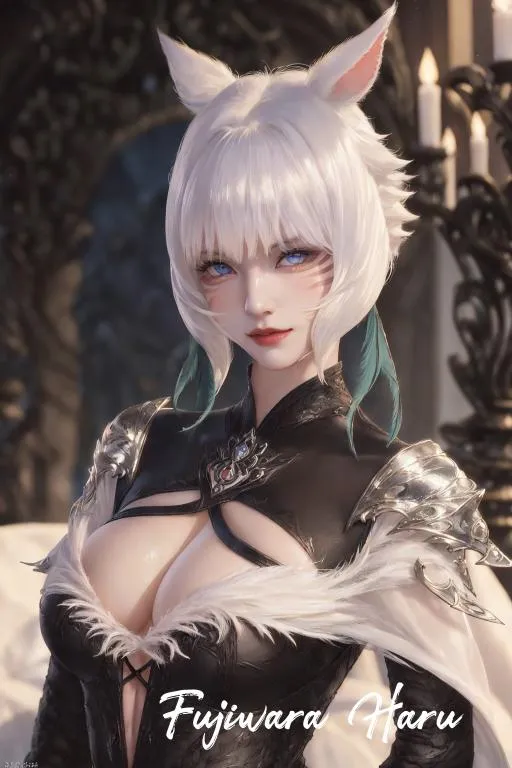In 2023 comics are a billion dollar business, not just the movies that are based on them either. Only two years ago the comics book sales in North America soared over $2 billion for the first time, marking a peak in the current love affair with the century-old tradition of sequential storytelling. But throughout that long and storied history there has been much debate over a key part of comic book conversation: What's the difference between a graphic novel and a comic book? The answer has changed over the years with new context, conversation, and clarifications being added by comic fans, critics, and creators. So in this piece we're going to dig into that question, the history behind it, and everything you need to know to answer it.
Is There a Difference Between Graphic Novels and Comics?

This is an incredibly complex question with a relatively simple answer which then sparks multiple other questions, hence why we're starting this piece by jumping into it right away. The real answer is that it's all about terminology. One thing to remember as we delve into this is that a comic can sometimes be a graphic novel but a graphic novel is always a comic. That's because comics is the art form in which the story is being told, whether you're reading a superhero story from Marvel or DC, an autobiographical graphic novel like March, or a comic strip like Calvin and Hobbes. All of those are different ways of presenting and telling a story via comics. So now we've gotten that important part out of the way let's dig into what the differences are and how the conversation around graphic novels and comics has changed over the years.
Single Issues, Volumes, Trade Paperbacks, and Collections

Terminology in serialized comics is often confusing, with words having multiple meanings and some terms that aren't really used elsewhere. But it's really important to understand, especially when we're talking about comics and graphic novels, and what makes them different or similar.
A standard modern single issue — or floppy, as it is sometimes called in comic shops and publishing — is 20 pages of story saddle-stitched (i.e. stapled) and printed on magazine quality paper. These are most often part of ongoing series or miniseries, but may also be one-shots. Over the years they've fluctuated in length from 17 pages of story to 80 or more, as is common now for oversized specials or anniversary issues.
A trade paperback is the industry term for a collection of comics previously published as single issues. Many of the most popular "graphic novels" in stores and libraries are TPBs, especially when it comes to stories from Marvel, DC, Image, and other monthly comic book publishers. Hellboy, The Walking Dead, and Infinity Gauntlet are all technically trade paperbacks, although there's nothing wrong with using the term graphic novel to describe them.
Other terminology that you might find in your local comic shop include: collected editions, which are also trade paperbacks but sometimes have extra content or back matter included; and omnibus, which is a larger collection of issues that's usually printed in hardcover and sometimes includes making-of back matter. To make things more confusing, hardcover collections are still called "trades" even though they aren't paperbacks!
Volume has two primary meanings in comics publishing. One usage denotes the current run of a given title; X-Men Vol. 1 began in 1963, and X-Men Vol. 2 began in 1992. This meaning has gained more and more traction as publishers continue to relaunch titles with new #1 issues. The other way that people use volume refers to the reading order of collected editions. So when you pick up a trade paperback of Brian K. Vaughn and Fiona Staples' Saga, you'll want to start with Volume One and continue with subsequent numbered volumes.
Ongoing Continuity vs. Contained Storytelling
In single issue comics — think of the X-Men comics, for example — stories often contain and allude to decades of canon and continuity. Though readers aren't expected to know everything that came before, if they do that can add context and texture to the story that they're reading. When we talk about graphic novels we more often think of singular stories which read as contained.
Even in the case of Watchmen, which was originally published as single issues in the comic book market, the story is completely contained within the 12 issues it collects. The Dark Knight Returns follows the same rule, with people only needing to read the single story to understand what's going on. This is even more prominent in stories that are published solely as graphic novels like Alison Bechdel's Fun Home, ND Stevenson's Nimona, and Trung Le Nguyen's The Magic Fish. Just like reading a novel, anyone can pick up these comics and enjoy them without any extra knowledge or reading needed.
What About Manga?
We would be remiss not to mention manga here seeing as it accounts for most of the comics read and sold not just in North America but in the world. Manga exists in an interesting space between all of this terminology. The vast majority of manga is initially serialized as chapters in anthology magazines like Weekly Shōnen Jump in Japan and collected into volumes when it's released around the world. The term manga essentially refers to all Japanese comics in any format. There's currently a larger ongoing conversation about whether comics from outside of Japan can be called manga, which is a direct result of the digest-sized black-and-white right-to-left reading format becoming an entire generation's first exposure to comics.
The Origin of the Graphic Novel
A lot of the earliest versions of comics that we call graphic novels are actually just collected editions of previously published serialized comics. But the book that is often cited as the first graphic novel eschews that. Will Eisner's A Contract with God: And Other Tenement Stories was published in 1978 and centers on four interwoven stories inspired by the famous cartoonist's early life. Though it feels more akin to an illustrated novel — with more standalone illustrations and text than standard comic book paneling — it is in hindsight seen as a trailblazer for what would become known as a graphic novel. Another late '70s book that is also in the conversation is Jim Steranko's 1976 illustrated novel, Chandler: Red Tide, which similarly experimented with layout, though it didn't use word balloons or other comic book text conventions that were expected of the form.
In academic circles at the time there was already a reconsideration of the comics art form and much of that came from rejecting the notion that superhero comics were all the medium had to offer, instead exploring the works of creators like Eisner and underground cartoonists including R. Crumb. A Contract with God: And Other Tenement Stories established the notion and context that a graphic novel was more mature, more intellectual, and therefore less disposable, especially as they were printed in a more standard publishing format rather than single issue superhero and pulp comics which were not made to last.
That doesn't mean superhero comics didn't want a piece of the action. In fact, Marvel popularized the term with their Marvel Graphic Novel line which put their superheroes into complete previously unpublished stories in the bande dessinée magazine style format. The first of the line to hit comics shops in 1982, Jim Starlin's seminal The Death of Captain Marvel, saw the cosmic hero die of cancer in a starkly grounded and sad tale.
However, the cultural understanding of graphic novels as a more serious form of adult entertainment would be cemented four years later in 1986 when three comics were released that would reshape the industry and would each become bestselling books in their own right.
Alan Moore, Dave Gibbons, and John Higgins' groundbreaking superhero series Watchmen was already a success by the time it was collected into the now legendary trade paperback (TPB) — or graphic novel, as many would call it. The book would go on to become one of DC's biggest selling collections of all time. That was in part thanks to a deal that DC signed with the creators that would give them their rights back if the book ever went out of print for a year. The collected edition of Watchmen has been in print ever since and has sold millions of copies since. In 2019 was the bestselling graphic novel through the sole distributor at the time, Diamond Comic Distributors. It played a large role in introducing the concept of the graphic novel to a general audience when it was included in Time Magazine's All-Time 100 Novels list in 2010.
DC had another groundbreaking hit with The Dark Knight Returns. Frank Miller, Klaus Janson, and Lynn Varley recontextualized Batman in what would become one of the most precedent setting and industry changing comics of the decade. Like Watchmen, the collected edition would find great success in the book market, becoming a New York Times Bestseller. Alongside Watchmen it sparked a wide-ranging conversation about there being a broader audience for superhero comics and comics in general outside of just children. And seeing as many readers discovered it in collected form, it raised awareness of the term graphic novel and popularized it, especially among those who may have looked down on comics in their single issue form.
The third vital '86 release was also a serialized story reprinted in a collected edition, Art Spieglman's seminal Maus. Telling the story of the Holocaust through anthropomorphised cats and mice, the series was originally published in the magazine Raw before being collected into two volumes. Those graphic novels have been consistent bestsellers and introduced readers to an entirely different world of underground post-modernist comic storytelling. Maus' prevalence and accessibility at book shops, schools, and libraries also made it an entry point for many young comic book readers, as well as a valued and respected piece of comics art in academia.
The Rise of Original Graphic Novels
Something that has changed the landscape of the comic industry has been the massive popularity of what we call Original Graphic Novels or OGNs. While they've been a part of the industry for decades — like Jim Starlin's seminal 1982 comic The Death of Captain Marvel — there's been an explosion in the form in both book and comic book publishing. What differentiates an original graphic novel from a collection is — like Eisner's A Contract with God: And Other Tenement Stories — the story was always planned to be a contained story published in a book format, rather than a series of issues that are then collected in trade paperback. That said, there are original graphic novels that continue through more than one volume. The important definition here is that they were never published in serialized form first.
Cartoonists like Raina Telgemeier and Dav Pilkey made original graphic novels some of the biggest selling books on the planet. Books like Smile, Dog Man, and non-fiction graphic novels like March and They Called Us Enemy have made original graphic novels a staple in bookstores and bestseller lists everywhere. That's a change that has caused even the biggest comic book publishers like Marvel and DC to invest in original graphic novels. The latter has had immense success with their graphic novels for young adults and younger readers like Gabriel Picolo and Kami Garcia's Teen Titans series and the recent Girl Taking Over: A Lois Lane Story by Sarah Kuhn and Arielle Jovellanos.
Evolving Terminology
All of this terminology is constantly evolving and new phrasing will eventually replace many of the favored words currently in use to describe comics. The advent of digital publication is already altering things, with specific phrases like digital comic, webcomic, and webtoon having their own colloquial uses to denote different kinds of length, layout, and release. As those formats continue to grow in popularity, some of their terminology will likely become industry standard and replace other words that might be in vogue right now.
However, for the foreseeable future, one thing is unlikely to change: at the end of the day it's all comics. Whether you're reading Teenage Mutant Ninja Turtles #138, Superman for All Seasons, Gender Queer: A Memoir, or Lore Olympus you're reading comics.
Rosie Knight is a contributing freelancer for IGN covering everything from anime to comic books to kaiju to kids movies to horror flicks. She has over half a decade of experience in entertainment journalism with bylines at Nerdist, Den of Geek, Polygon, and more. Rosie is a published comics author who has written titles including Godzilla Rivals vs. Battra and The Haunted High-Tops. She co-hosts the weekly Crooked Media pop-culture podcast X-Ray Vision. When she's not writing, you can find her playing Dragon Ball FighterZ or rewatching weird old horror and martial movies in her free time. She loves making comics and zines as well as collecting VHS and reading much manga as humanly possible. You can find her on social at @rosiemarx.





